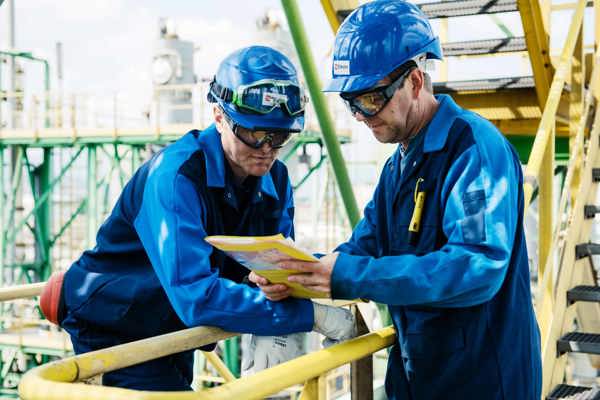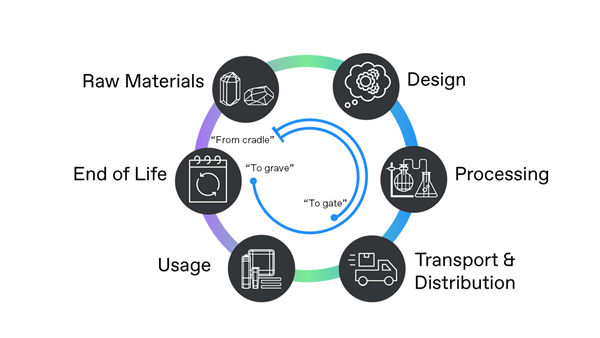- Elkem
- Sustainability
- Life cycle analysis
Life cycle analysis

Elkem is taking action to reduce our carbon footprint as much as possible. In order to do so, we must have a comprehensive understanding of our products' footprint using life cycle analyses. For Elkem, transparency on the CO₂ emissions of our products is essential to achieve our goal of steering towards net-zero greenhouse gas emissions. Performing a life cycle analysis is key to understanding the carbon footprint of our products and providing customers with useful and transparent data.
What is a life cycle analysis (LCA)?
A life cycle analysis (LCA) is an analysis of the impact that an object has on the environment around it throughout its lifespan. Many environmental impacts can be looked at when performing a life cycle analysis, such as greenhouse gas emissions, energy use, water consumption, acidification, ozone layer depletion, to name a few. The steps to conduct the LCA of a product are the following: firstly, defining the goal and scope of the product; followed by the inventory analysis, impact assessment, and, finally, the interpretation of the data.

Cradle-to-gate and cradle-to-grave LCA's
There are two main ways of calculating the LCA of a product. The first one, from cradle-to-gate, is used to assess a product impact from production (cradle) until it leaves the factory (gate), before it is transported to the consumer. This is the typically the main demand from our customers.
The second option to perform the LCA of a product is from cradle-to-grave. This is the most comprehensive way, since it assesses the emissions of a product from production (cradle) to its end-of-life (grave). The main challenge is to have sufficient data to understand the use and end of life phase of a product. If the lifecycle of the product is circular, we can also talk about “cradle-to-cradle”.
Scope 1, 2, and 3
The full range of emissions are distinguished by three different scopes. Scope 1 concerns direct emissions from production facilities and CO₂ from biomass exempt (seen as carbon neutral). Scope 2 refers to indirect emissions from purchased electricity, steam, heat and cooling. Scope 3 emissions refer to the emissions across the value chain for products produced: related
to upstream activities (“to gate”) and downstream activities
(“after gate”).
Why is it important to understand the LCA of a product?
It is important to know the LCA of a product to have an inventory of every raw material, all energy flows and convert them into environmental, health and resource impacts. Understanding the LCA of a product is also beneficial in order to compare products, using an objective and quantitative method.
Elkem division has already engaged some work around the LCA of its products to communicate verified data to our customers.
Life Cycle Analysis in Elkem – Cradle to gate (scope 1,2,3)
Finalized:
- Thamshavn (Silicon, Elkem Microsilica®)
- Salten (Silicon, Microsilica)
- Bremanger (Silgrain®)
- Bremanger (Foundry Alloys, Elkem Microsilica®)
- Iceland (Fesi, Elkem Microsilica®)
The results of the LCA's are being processed in the Elkem product data sheets and are available for our customers. Contact us for detailed information.
MORE ABOUT SUSTAINABILITY AT ELKEM
Contact us
Take your business to the next level by partnering with a world-leading material manufacturer.